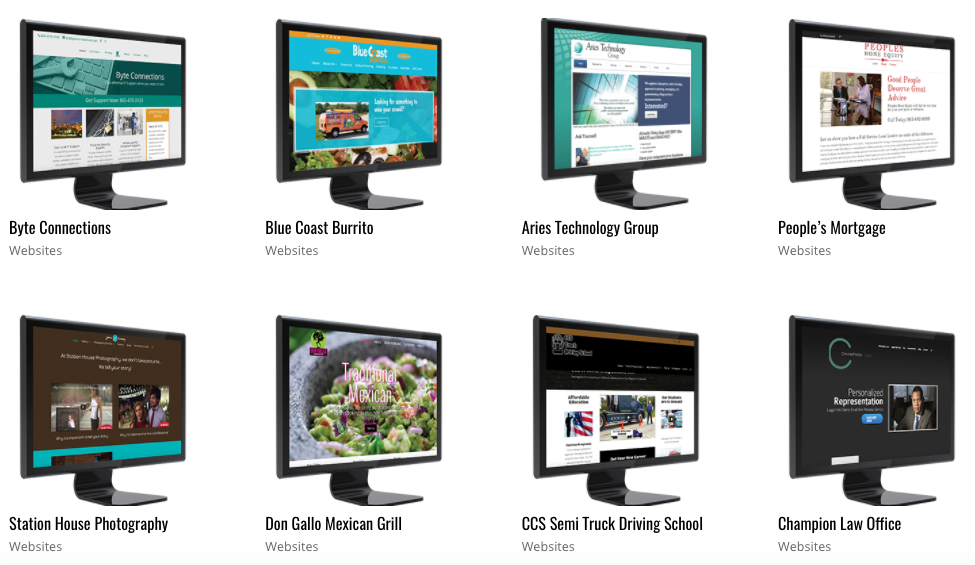 These days, web design skills are essential for any business looking to thrive in their industry. Luckily, we’ve got the basics covered in today’s article.
These days, web design skills are essential for any business looking to thrive in their industry. Luckily, we’ve got the basics covered in today’s article.
I recently sat down with BoydTech designer, Emily Andrews, to discuss some of the most useful industry tips she’s picked up in her career. Whether you’re trying to break into the design industry or you’re an entrepreneur looking to hone your design skills, this one’s for you.
1. Be on top of your domain name game.
The first step to designing any website is to pick a domain name. Picking a good domain name is important because it’s located in multiple search engines full of sites that are probably pretty similar to yours. Because of this, you’ll want to keep your domain name short and descriptive. Adding keywords that describe your business will help searching consumers find you more easily, as well as give consumers who don’t know about your site a better idea of what your business has to offer.
The biggest problem new designers run into during this stage is availability. Because the web is filled with websites from just about every industry, it can be difficult to find one that is available for use, creative, and appropriate for your business. Unfortunately, there’s no magic fix for this problem. More often than not, finding the perfect domain name requires a lot of brainstorming, back-up options, and research (such as consumer testing).
2. Keep your site simple and free of clutter.
 The next step in creating a new website is design. When building a website, organization and a clean structure are of the upmost importance. Consumers typically use websites to gather a first impression of a company or brand that they’re interested in. So, naturally, if the online site isn’t structured well, the consumer will most likely assume that the company or brand isn’t either.
The next step in creating a new website is design. When building a website, organization and a clean structure are of the upmost importance. Consumers typically use websites to gather a first impression of a company or brand that they’re interested in. So, naturally, if the online site isn’t structured well, the consumer will most likely assume that the company or brand isn’t either.
Before you begin designing your site, play around with a few different themes in your head. Draw a mental (or even physical) picture of a few different layout options. Then, go one step further and imagine what it will look like with different colors, fonts, and visual elements. This way, when you get to the actual design stage, you’ll have saved yourself a lot of time and frustration trying to get set up.
3. Give the people what they want.
An important part of web design is obviously going to be consumer interaction. After all, that’s who you’re creating the site for. So, while you’re in the design stage, remember to give your specific audience exactly what they want. Dig into the audience a bit before designing the site in order to determine what they expect to see on a website in your industry and what they want to see— these two things could be the same or different, depending on your audience.
Once you’re done researching, keep in mind the most important information should always be featured at the top of the site. Anywhere else on the site and you run the risk of the consumer not being able to find the information and moving on to a competitor. Information that is commonly featured at the top of a website can include the company address, phone number, hours, mission statement, sign in boxes (for sites that require individual accounts), or menus (for restaurant sites). This information is highly sought out by consumers, so make sure it’s big, bold, and easy to locate (even if through a link to a different page).
4. Provide at least one call-to-action.
As a new web designer, you’ll need to know what your consumers need from your site and how to give it to them. This can be done through a CTA (call-to-action). Ask yourself this: What do I want my customers to do when they visit my site? Once you can answer that question, you’ll need to provide at least one CTA to avoid any consumer confusion or frustration.
Typically, CTA’s are presented as links meant to entice consumers into learning more about a product, service, or overall company in order to drive sales. Below are a few examples of CTA’s located on BoydTech Design’s website. If you can’t provide a CTA for some reason, make sure to lead consumers to other forms of communication, such as contact information or location details.

5. Make sure your site is responsive.
Simply put, all sites today need to be responsive. There’s just no way around it. In any industry, there’s a good chance your site is going to be accessed in more than one way. This means that sites need to appear well-structured and organized in both desktop view AND mobile view.
Smartphones and tablets are everywhere, and sites that don’t respond well to them— through things like awkward spaces, shrunk or enlarged fonts and photos, or blurred resolution— are set up to fail in today’s digital society. New designers will learn this quickly: online consumers have little patience, especially when it comes to slow service, service disruptions, or sloppy site presentation. Therefore, eliminating these issues before they become frustrated and leave is the best way to keep a huge segment of your online audience happy.
As always, thanks for reading and happy marketing!
—Amanda Myers, Copywriter at BoydTech Design, Inc.

0 Comments